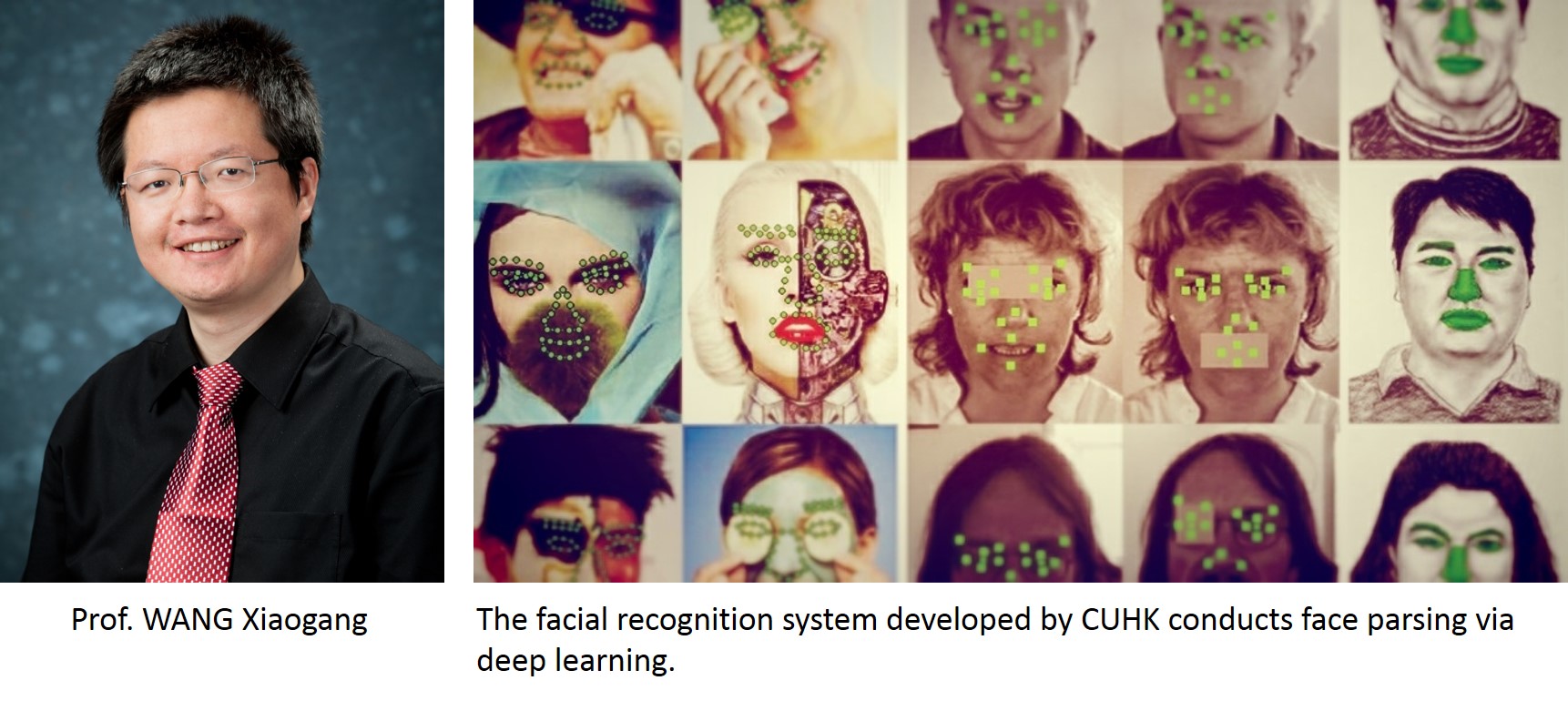Homepage
Home
Novel Face Recognition System Developed by Prof. WANG Xiaogang (EE) and Prof. Xiaoou Tang (IE) Achieves 99.15% Accuracy
A research team led by Prof. Xiaoou Tang (IE) and Prof. Xiaogang Wang (EE) has built a novel facial recognition system that with the highest accuracy in the world. While humans recognize faces at an accuracy rating of 97.53% on Labeled Faces in the Wild, the recognition system developed by CUHK was tested using thousands of picture sets, and it can recognize faces at an accuracy of 99.15%, regardless of changes in lighting, make-up and camera angles. This is the first time for computing algorithms to reach human face verification performance on this dataset.
For details, please click here. (Chinese version)

The Chinese University of Hong Kong has created an award scheme ─ Outstanding Fellowship Awards ─ to recognise teaching staff members who have displayed academic excellence and contributed to the University’s strategic development. We are delighted to announce that two professors from the Faculty of Engineering have been selected as recipients of the award in 2014. Prof. Jian-Bin XU (Director of Materials Science and Technology Research Center, Professor, Department of Electronic Engineering) has been named Outstanding Fellow of the Faculty of Engineering for 2014-2019.
A new standard for evaluating wearable, cuffless blood pressure devices has been approved by IEEE. The chair of the working group for this new standard is IEEE Engineering in Medicine and Biology Society Fellow, Prof. Yuan-Ting Zhang. The new standard may influence life-saving innovations in healthcare, and is truly exciting.
For more details, please visit IEEE Engineering in Medicine & Biology Society / IEEE Standards Association.
(Please click here to view the Chinese version)
Prof. XU Jianbin is awarded a prestigious award of Cheung Kong Visiting Chair Professorship (長江學者-講座教授) by the Ministry of Education, China.
There are 92 awardees in this round. For detailed information, please refer to here.
Congratulations!
Subcategories
Scholarship Received Article Count: 22
Professors and Research Staff Article Count: 132
Students Article Count: 159



